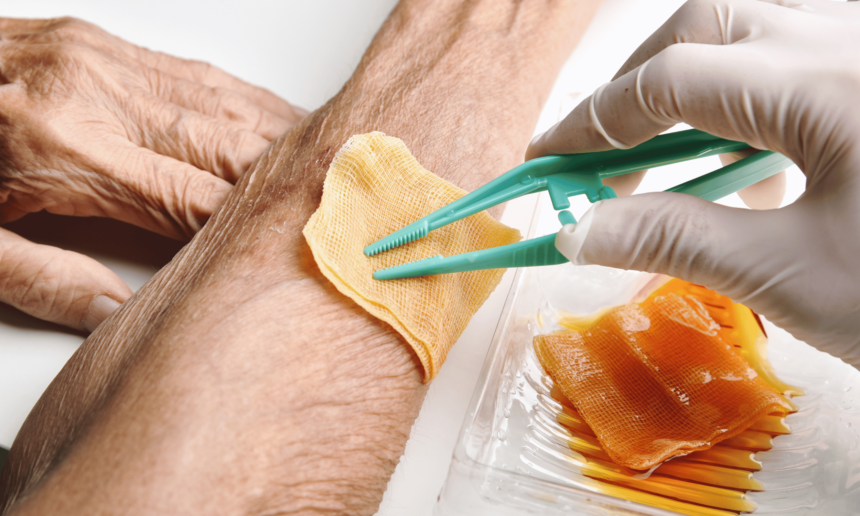Wound healing is a natural process that typically occurs within a few weeks. However, when a wound fails to heal properly within four to six weeks, it is classified as a chronic wound. Chronic wounds can lead to serious complications, infections, and even amputations if left untreated. Understanding the common causes of chronic wounds and how to prevent them is essential for better wound management and overall health.
What Are Chronic Wounds?
Chronic wounds are slow-healing wounds that do not follow the normal healing process due to underlying health conditions or external factors. These wounds remain open for an extended period, making them more susceptible to infection and tissue damage.
Common Causes of Chronic Wounds
Several factors contribute to wound healing delays. Below are the most common causes:
1. Poor Blood Circulation
Why It Happens:
- Peripheral Artery Disease (PAD): Narrowed arteries reduce oxygen and nutrient supply to tissues, delaying healing.
- Chronic Venous Insufficiency (CVI): Blood pooling in veins leads to swelling, ulcers, and delayed healing.
Prevention Tips:
✔ Stay active to improve circulation.
✔ Manage conditions like diabetes and hypertension.
✔ Avoid prolonged sitting or standing.
2. Diabetes and High Blood Sugar Levels
Why It Happens:
- High blood sugar damages nerves (neuropathy) and blood vessels, reducing sensation and healing ability.
- Diabetic wounds, especially on the feet, often become infected and hard to heal.
Prevention Tips:
✔ Monitor blood sugar levels regularly.
✔ Inspect feet daily for cuts, blisters, or infections.
✔ Wear proper footwear to avoid foot ulcers.
3. Pressure Ulcers (Bedsores)
Why It Happens:
- Prolonged pressure on certain body parts (e.g., heels, back, hips) reduces blood flow, causing tissue breakdown.
- Common in bedridden or wheelchair-bound individuals.
Prevention Tips:
✔ Reposition the body every 2 hours (for bedridden individuals).
✔ Use pressure-relieving cushions or mattresses.
✔ Keep skin clean, dry, and moisturized.
4. Infections and Biofilm Formation
Why It Happens:
- Bacterial infections delay healing and may lead to sepsis if untreated.
- Biofilms, protective layers of bacteria, make infections harder to treat.
Prevention Tips:
✔ Clean wounds with antiseptics and keep them covered.
✔ Seek medical attention if a wound shows redness, swelling, or pus.
✔ Use antibiotic treatments if necessary.
5. Smoking and Poor Lifestyle Choices
Why It Happens:
- Smoking reduces oxygen supply to tissues, slowing wound repair.
- Poor diet lacking vitamins A, C, and zinc weakens the immune system.
Prevention Tips:
✔ Quit smoking to improve circulation.
✔ Eat a balanced diet rich in protein, vitamins, and minerals.
✔ Stay hydrated to maintain healthy skin.
6. Autoimmune Diseases and Chronic Illnesses
Why It Happens:
- Conditions like rheumatoid arthritis, lupus, and cancer weaken the immune system.
- Reduced immune response leads to slow wound healing.
Prevention Tips:
✔ Work with a doctor to manage autoimmune conditions.
✔ Follow a healthy lifestyle to boost immune function.
✔ Use medications and therapies that promote healing.
7. Poor Wound Care and Hygiene
Why It Happens:
- Improper wound cleaning or dressing increases the risk of infections.
- Using wrong dressings can delay healing or worsen wounds.
Prevention Tips:
✔ Clean wounds with mild antiseptics and cover them properly.
✔ Change dressings regularly to prevent bacterial growth.
✔ Consult a wound care specialist for proper treatment.
How to Prevent Chronic Wounds
Preventing chronic wounds requires a combination of healthy habits, regular monitoring, and early intervention. Follow these key strategies:
- Maintain Good Circulation: Exercise, stay active, and manage heart health.
- Control Underlying Conditions: Monitor diabetes, high blood pressure, and autoimmune diseases.
Practice Proper Wound Care: Clean wounds, use sterile dressings, and seek medical advice when needed.
Adopt a Healthy Lifestyle: Quit smoking, eat a balanced diet, and maintain proper hydration.
Prevent Pressure Ulcers: Change positions frequently and use supportive cushions.
Proper wound care is a key factor in preventing chronic wounds. For a step-by-step guide on daily wound care routines to help with prevention, check out our article on Daily Wound Care Tips to Prevent Chronic Wounds.
Conclusion
Chronic wounds can significantly impact health and quality of life if not managed properly. Understanding their root causes and taking preventive measures can reduce risks and promote faster healing. If you or a loved one has a slow-healing wound, consult a healthcare provider for timely intervention.


Leave a Reply